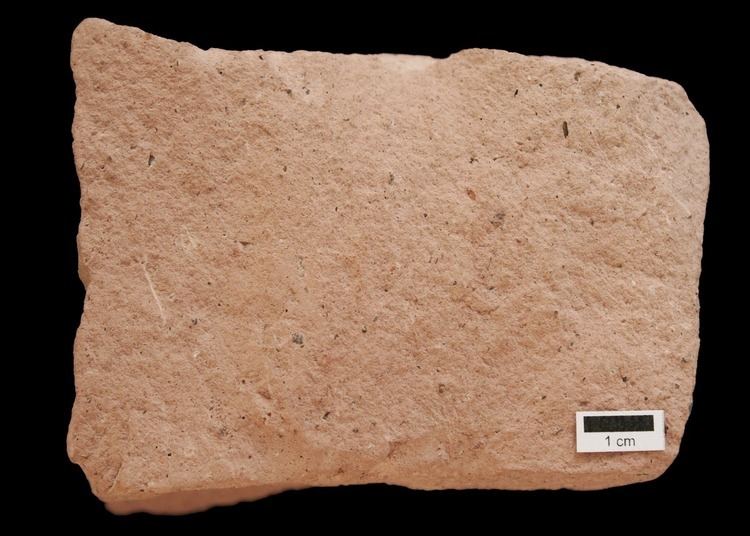 | ||
Rhyolite is an igneous, volcanic rock, of felsic (silica-rich) composition (typically > 69% SiO2—see the TAS classification). It may have any texture from glassy to aphanitic to porphyritic. The mineral assemblage is usually quartz, sanidine and plagioclase (in a ratio > 2:1—see the QAPF diagram). Biotite and hornblende are common accessory minerals. It is the extrusive equivalent to granite.
Contents
Geology
Rhyolite can be considered as the extrusive equivalent to the plutonic granite rock, and consequently, outcrops of rhyolite may bear a resemblance to granite. Due to their high content of silica and low iron and magnesium contents, rhyolite melts are highly polymerized and form highly viscous lavas. They also occur as breccias or in volcanic plugs and dikes. Rhyolites that cool too quickly to grow crystals form a natural glass or vitrophyre, also called obsidian. Slower cooling forms microscopic crystals in the lava and results in textures such as flow foliations, spherulitic, nodular, and lithophysal structures. Some rhyolite is highly vesicular pumice. Many eruptions of rhyolite are highly explosive and the deposits may consist of fallout tephra/tuff or of ignimbrites.
Eruptions of rhyolite are relatively rare compared to eruptions of less felsic lavas. Only three eruptions of rhyolite have been recorded since the start of the 20th century: at the St. Andrew Strait volcano in Papua New Guinea, Novarupta volcano in Alaska, and Chaiten in southern Chile.
Europe
Germany
America
Oceania
Asia
Name
The name rhyolite was introduced into geology in 1860 by the German traveler and geologist Ferdinand von Richthofen.
Quarrying
In North American pre-historic times, rhyolite was quarried extensively in eastern Pennsylvania in the United States. Among the leading quarries was the Carbaugh Run Rhyolite Quarry Site in Adams County, where as many as fifty small quarry pits are known.
